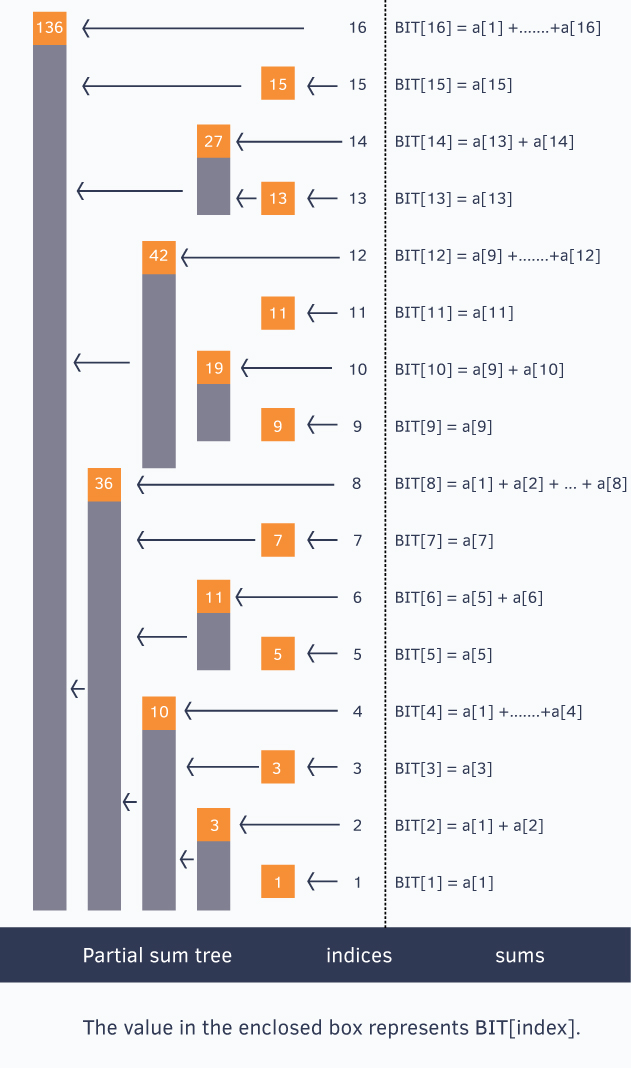When is Fenwick tree used
- Fenwick tree is used when we need to look for range sums for cases where elements keep getting updated
- If elements do get updated we can probably use something like prefix sum array which is more efficient
- Fenwick tree is often compared to segment tree but, I would prefer Fenwick because it is a lot simpler to implement and is the same in terms of efficiency
Implementation
- Fenwick tree is similar prefix sum array in that tree[i] represents aggregate sum of multiple indices
- However while for prefix sum array, prefix[i] is sum of array 0 ~ i, this is not the case for Fenwick tree
- Think of it as a partial sum array
- Basically if A can turn into B after keep adding 1 to its last bit that is 1, they fall into same group
So now the question is how do we know which indices tree[i] need to contain?
- Every indices can be represented in binary form ex) 2 -> 10
- We can use bitwise operation to isolate the last bit that is 1
- Then we can add that to the index and keep repeating it until we go out of bound
- Now, all the indices that we have visited fall into a same group
- If we have n numbers in the tree then, we can represent all the indices in logn bits, which our operations will take at most logn time
- Notice that we need to isolate at least 1 bit. If we use 0-indexed array and try to calculate for index 0, then it wouldn’t work. That is why we need to use 1-indexed array for this.

Code Snippet
vector<int> tree(n + 1);
void update(int index, int val) {
++index;
while (index <= n) {
tree[index] += val;
index += index & (-index);
}
}
int get_sum(int index) {
++index;
int sum = 0;
while (index > 0) {
sum += tree[index];
index -= index & (-index);
}
return sum;
}
Complecity
- space complexity: O(n)
- time complexity: O(logn)
Sources
- https://www.hackerearth.com/practice/notes/binary-indexed-tree-or-fenwick-tree/